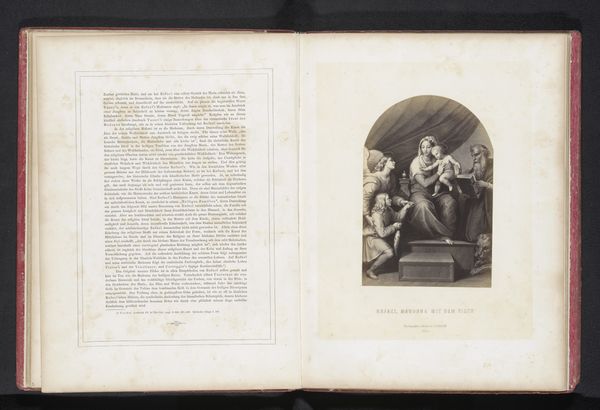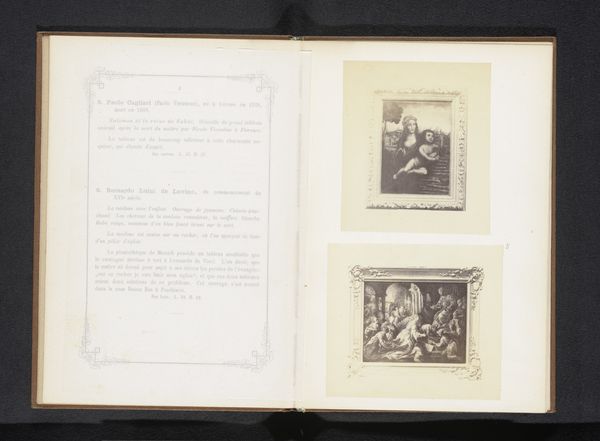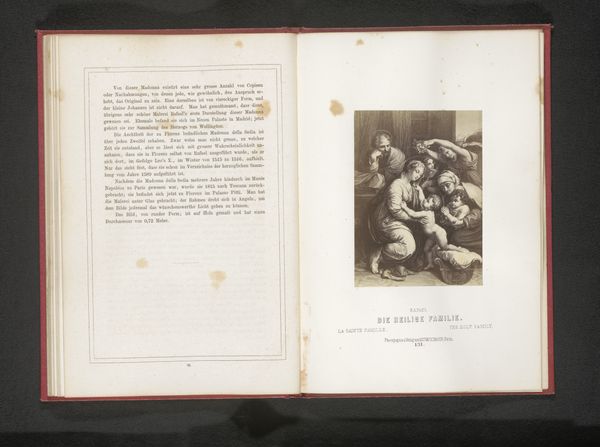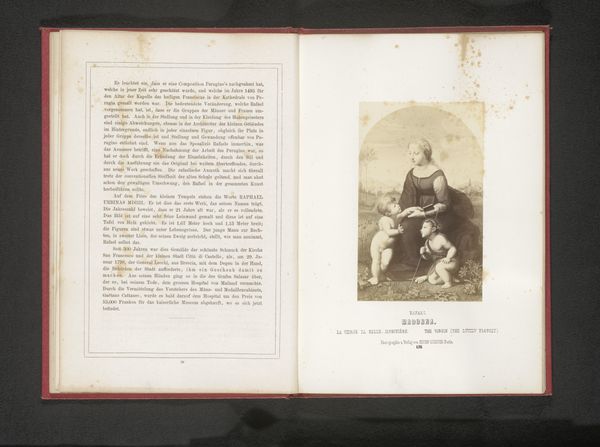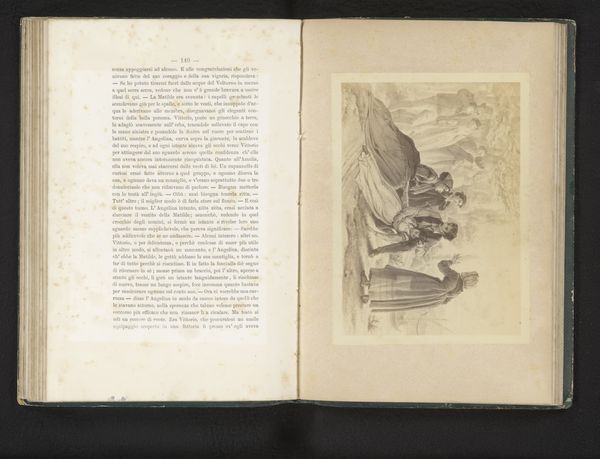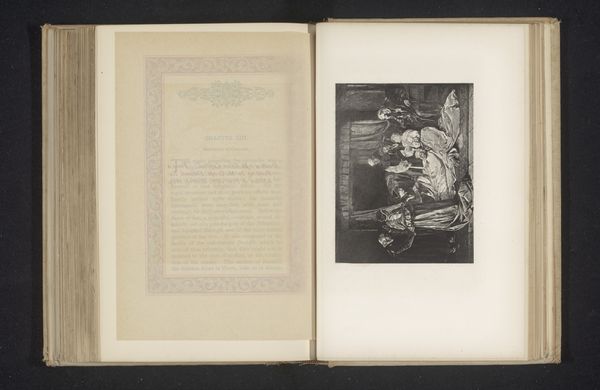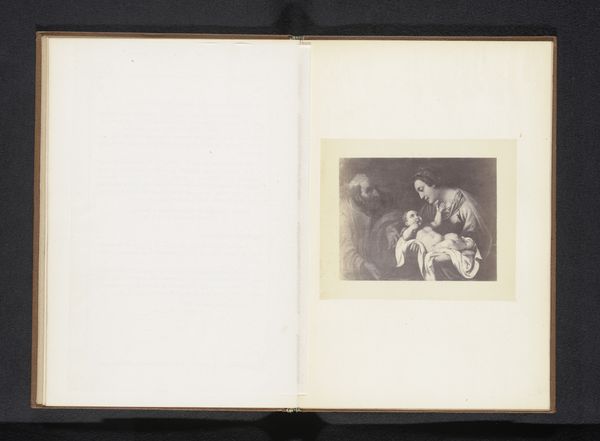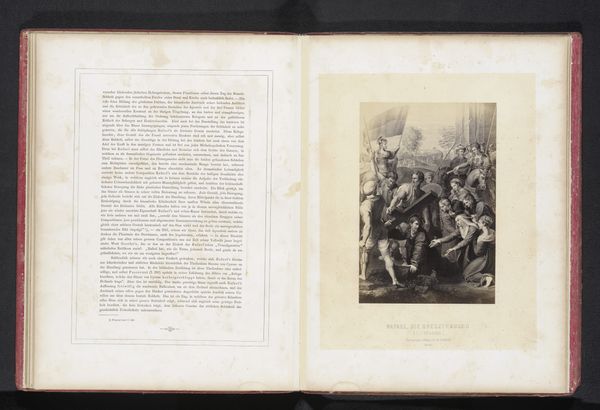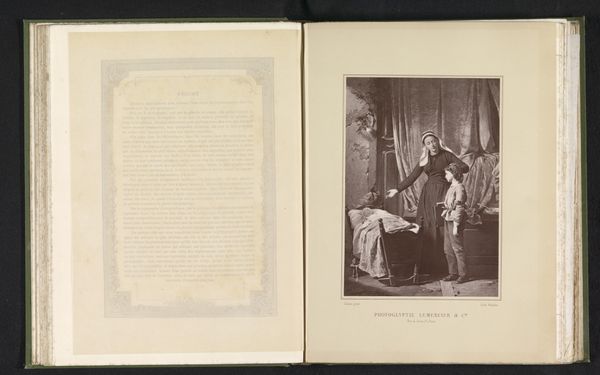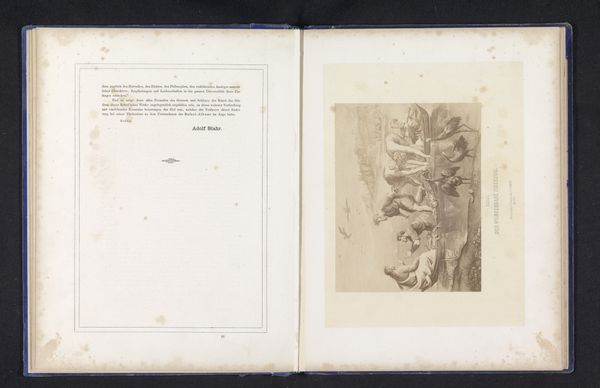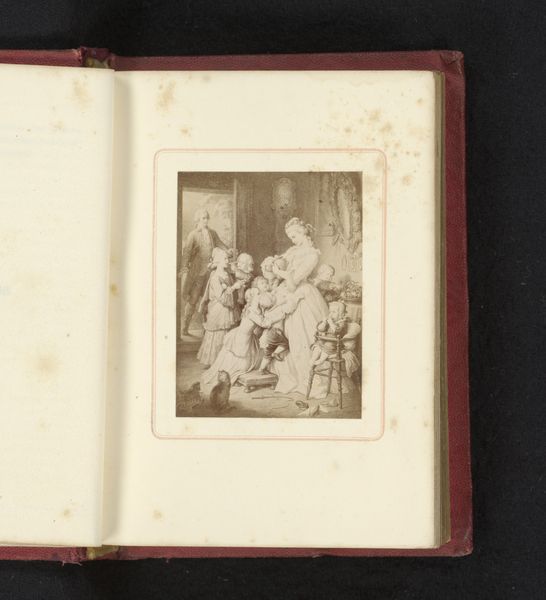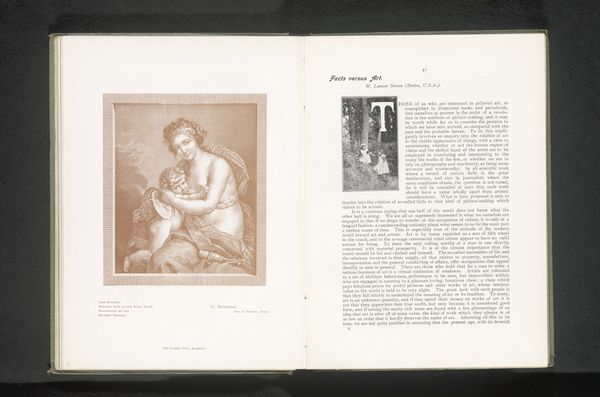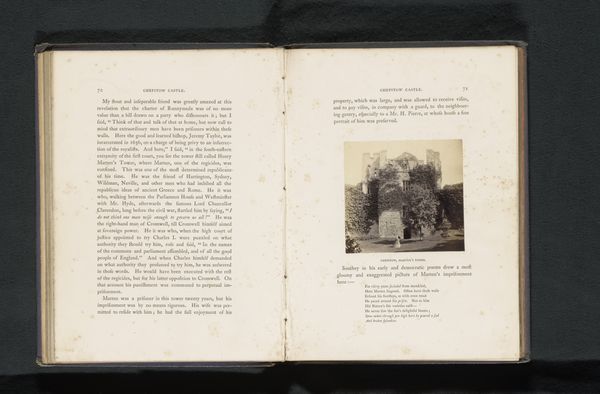
print, engraving
#
narrative-art
# print
#
figuration
#
coloured pencil
#
italian-renaissance
#
engraving
Dimensions: height 187 mm, width 145 mm
Copyright: Rijks Museum: Open Domain
Curator: This engraving, a "Fotoreproductie van een prent naar La Perla door Rafael," dating from before 1861, really speaks to the complex relationship between artistic production and reproduction in the 19th century. What strikes you most about it? Editor: The level of detail achieved through engraving is quite remarkable. It feels like they're trying to perfectly replicate the original painting. What was the purpose of such meticulous reproductions? Curator: Precisely! In the 19th century, engravings like this played a crucial role in disseminating images to a wider audience. Before photography became readily available and affordable, engravings were the primary means of circulating and popularizing artworks. The labor involved was extensive, a whole economy sprung up around creating these prints. Editor: So, it's about accessibility and the democratization of art through reproduction, but with a huge amount of work needed? Curator: Exactly. Consider the social context: the rise of the middle class, increased literacy, and a growing demand for art beyond the wealthy elite. These engravings met that demand, bringing Raphael’s masterpieces into bourgeois homes, shaping their understanding of art. But also influencing how they perceive value - is this an art object or a piece of commodity? Editor: It almost feels like an early form of mass production, but done by hand. Did artists always welcome this form of reproduction? Curator: It was a double-edged sword. On one hand, it increased their fame and reach. On the other, it put their work into a new sphere of material culture, where control was wrested from the author. The question of authenticity becomes blurred by industrial methods of production and consumption. Editor: That is fascinating! I hadn't considered the social and economic forces driving these reproductions. It's made me think differently about the value we place on art and its accessibility. Curator: Indeed, examining the material conditions and labor involved reveals a more profound understanding of how art circulates and influences society.
Comments
No comments
Be the first to comment and join the conversation on the ultimate creative platform.
